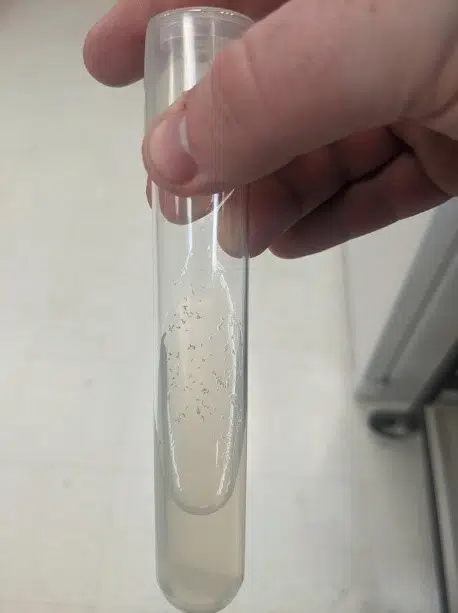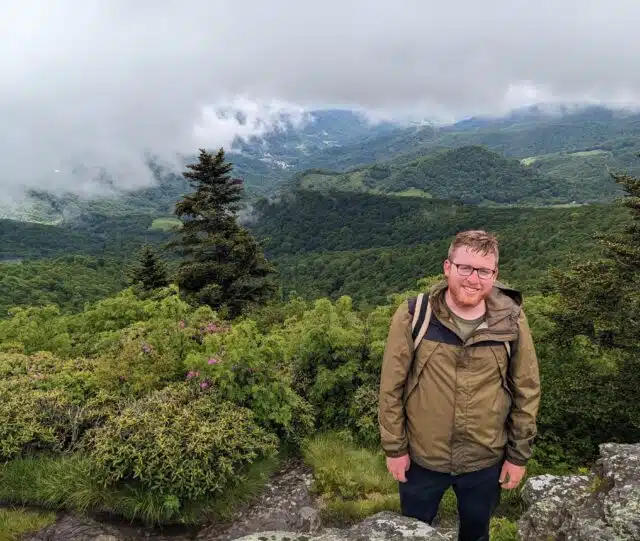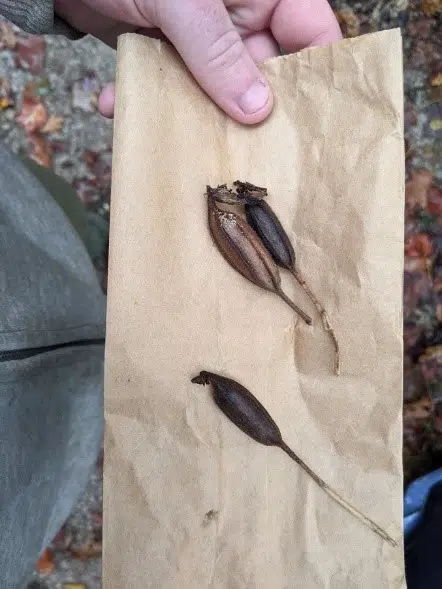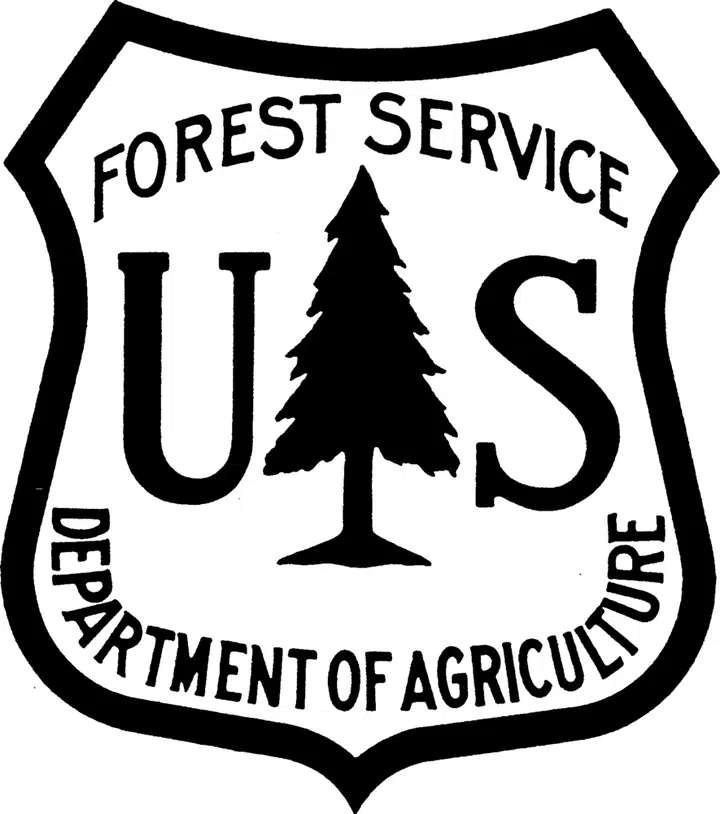
Orchids are among the most ornamental and diverse groups of plants in the world. We often think of them as epiphytes, growing on trees in the tropics. Many would be surprised to know that there are orchids native to Ohio and that they do not grow in trees. Our native orchids grow in the ground and are called terrestrial orchids. Ohio has approximately 47 native orchid species, and of them, the lady’s slippers may be the showiest.
Ohio has 5 native species of lady’s slippers (genus Cypripedium) and one naturally occurring hybrid. Holden has three of these species growing in our natural areas. Lady’s slippers are characterized by a modified sepal, or labellum, that is shaped, you guessed it, like a lady’s slipper. This labellum serves to attract pollinators, mainly bees, to the orchid. Once a lady’s slipper is pollinated, a fruit called a capsule forms and maturity splits open to disperse thousands of tiny, dust-like seeds.
Three capsules (left) and the thousands of seeds contained within (right).
Orchids usually require a special relationship with fungi to germinate and grow successfully. Consequently, they can be tricky for gardeners and horticulturists to grow from seed if you do not have the appropriate fungi present. These fungi, termed mycorrhizal fungi, infect recently germinated seedlings and transport essential nutrients to the growing plant. Despite this apparent need for a fungal partner to be able to grow orchids successfully from seeds, scientists and orchid enthusiasts have figured out a way to bypass this need – in vitro seed germination.
Cypripedium seeds can be sown in vitro – in a sterile, laboratory environment on a nutrient agar, or gel – to supply the essential nutrients that they would otherwise get from a mycorrhizal fungus. In partnership with folks in the Horticulture Department, we visited one of Holden’s natural areas in October to collect seeds of the state threatened Cypripedium reginae, the showy lady’s slipper. This week, we sowed these seeds in test tubes on nutrient agar. Now they are sitting in a box in the dark and will remain there for at least month when we will check for germination. Fingers crossed for good germination!

I hope to provide periodic updates on this blog as we move along in the orchid germination process. And if things go well, we’ll try a few more species next year. The resulting orchid seedlings can be used for bolstering the current population, for backing them up in the Holden plant collections, and for educating our visitors about biodiversity and conservation.
Our mission work in research, conservation, collections and education could not continue without you. Please consider making a gift today.

Connor Ryan, MS
Rhododendron Collections Manager
My group is engaged in three things at Holden: curating the Rhododendron collection, breeding landscape plants, and stewarding the David G. Leach Research Station. Current collections focuses include North American native rhododendrons and azaleas, especially R. flammeum, R. prunifolium, and the Ohio natives, as well as any non-native species that may be adapted to our climate. Breeding focuses are on broader adaptability in elepidote rhododendrons, reblooming in evergreen azaleas, and a few smaller projects with Pieris and Hamamelis. We strongly believe in the value of living collections and are happy to share non-proprietary germplasm or accommodate collections-based scholarship. If you work for a botanical garden or nursery interested in rhododendrons (or azaleas) or are a scholar studying them, please get in touch. We would love to help with your work.













